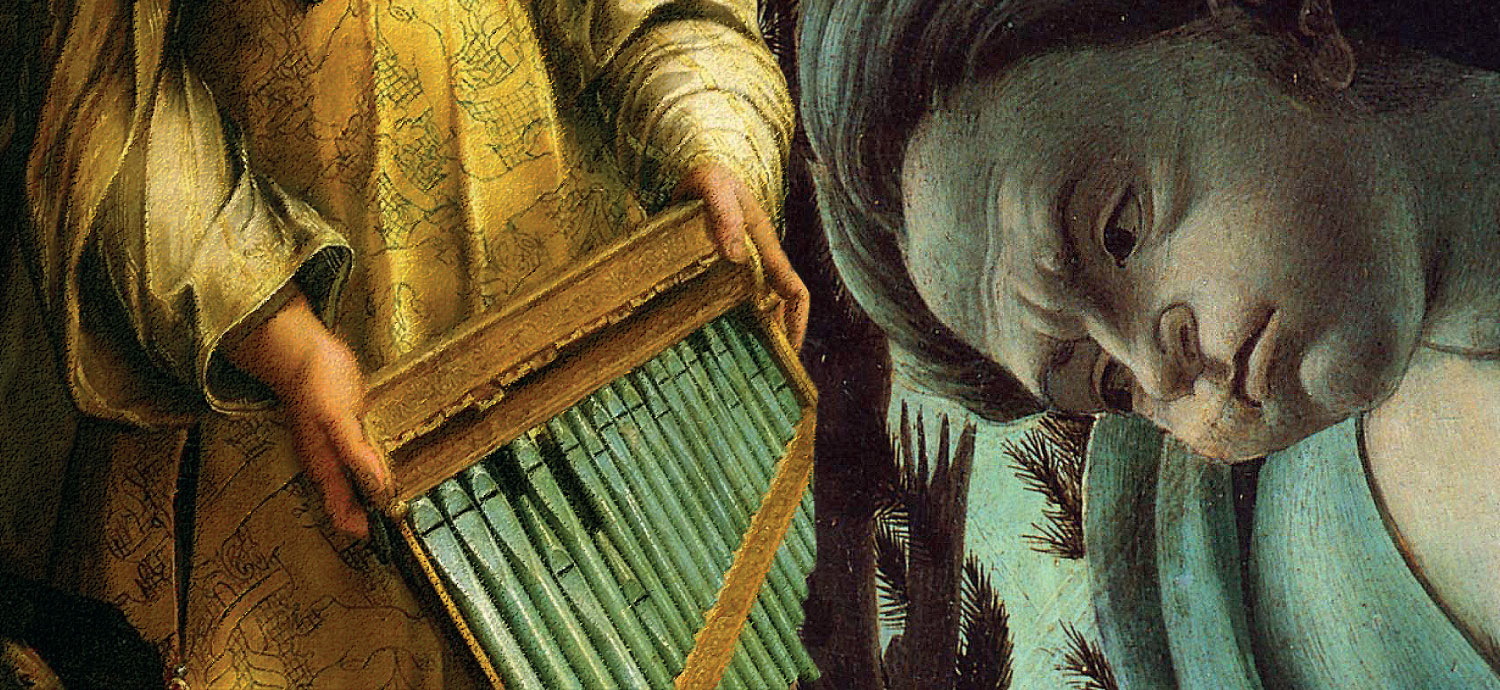
Torna, zefiro pinto, e l’erbe e i fiori
E i bei giorni rimena,
Che dell’aspr’ onde fuori
S’erga la soavissima sirena.
Torna, zefiro, torna, e ‘l ciel serena;
Che la mia stella fida
Meco s’assida in questa riva adorna.
Torna, zefiro, torna.
(Giovan Battista Strozzi, madrigalist, 1504-1571)
And the Zephyr, one fine day, came back into my life! A Zefiro Novo (a New Zephyr) that brought with it the spirit of the “lovely days”, so that “my trusted star”, Music, sat beside me again. It is in order to give thanks to this zephyr and to music, the trusted star now rediscovered, that I have recently begun to play the portative organ.
The Umbrian Girolamo Diruta, between the end of the sixteenth century and the beginning of the seventeenth century, describes the organ as the instrument “that gathers together all the others, that is, the virtues of all the other instruments, with which the value of music in the voices and in the sounds is sweetly revealed”. He wrote about the use of the organ to show and get people to understand the “true” way to use it and how “the sweetness and gentleness that combine within it so well all other instruments, to represent on Earth the loveliest concept of the Blessed spirits in Heaven, to praise the Blessed Lord (what is shown by the Organ in the Church of S. Pietro of Perugia with lovely verse, stating Haec si contingunt Terris, quae gaudia Caelo? as if to say If on Earth one enjoys such sweet harmony, with so much artifice caused to human ears, what enjoyment and joy could the Angelic choirs and the Blessed Spirits in Heaven provide?)”.
On earth, therefore, the organ is the symbol of the music of the celestial sphere, of the music played in the presence of God and lit directly by his Light: it is the symbol of God’s music. A music that reigns in another dimension and which is inaudible, unimaginable, inconceivable for us mortals.
The humble portative organ has maintained this symbolic value to the highest degree for centuries, right up to our time. In iconographic tradition the portative is the instrument of Santa Cecilia, of the Muse Polyhymnia and the personification of Music itself. Examples which are unsurpassed in beauty and symbolic forcefulness of these three appearances of the instrument are three works of art which can be traced back to the land I came from, the Marche: The Ecstasy of Santa Cecilia and four Saints by Raffaello Sanzio da Urbino, Polyhymnia by Giovanni Santi, the father of Raffaello, and Musica by Giusto di Gand, painted in Urbino at the court of Federico da Montefeltro.
In particular, Giusto’s masterpiece, which is imbued with the guiding themes of Hermeticism and of the Cabala and which can be defined as a good synthesis of the philosophical and musical thinking of Marsilio Ficino, seems to be a highly refined iconographic representation of what will later be expressed more naively by Diruta.
In the painting, the portative organ has been placed on the third step under the base of the throne of music, and there is a male figure – a Man – kneeling on that same step. The woman on the throne - Music – using the forefinger of her left hand and her lowered left arm is indicating the instrument under her feet, the symbol of music on earth. In her raised right hand she is holding a book, the symbol of wisdom which allows the divine message to be conveyed.
On the archivolt above the woman’s head there is an inscription in Kufic script, magic calligraphy, that refers to ancient Persia, the place where according to myth music was born or rather where it was revealed on earth. This inscription therefore contains the foundations, the beginnings of music, and refers to its divine essence.
In Giusto’s painting there is an ascending pathway with a corresponding increase in light and the colours change from green to gold by way of red.
Ever since I was young what has always fascinated me about the portative organ is precisely the enormous symbolic power it has, a power that has grown exponentially in recent centuries due to a very important fact: the instrument that was supposed to tangibly represent heavenly music on earth thanks to its sound had, incredibly, lost exactly that – its sound! It had already stopped being used in the early sixteenth century and no instruments from that time have survived, so the only reason the portative organ is still with us now is through the iconography of works of art and the instruments which are currently in use were created recently, based on those images. We don’t even know much about the music played using the portative organ. In short, the portative has reached us solely as a symbol, the symbol of Music.
My choosing to play it to celebrate the Zefiro Novo that Music itself has brought back into my life is also essentially symbolic.
It represents a new departure for me, towards other directions and other musical dimensions. My desire is to travel along new paths or take the well-trodden ones with a different awareness, especially of the spiritual part of my being.
Udirai melodia del bel sonare
de vantaggiati pifari e trombecti,
arpe et leuti con dolce cantare.
Viole, dolcemele et organecti,
con citarae, salterio et cantarelle
tu poderai dançar se te ‘n dilecti.
Et vederai queste mie donne belle
dançar a bassadança et lioncello
a doi a doi con l’altre damigelle,
quai a la piva e quale a saltarello,
e chi a rostibolì et chi al gioyoso,
et chi a la gelosia novo modello.
(Gaugello Gaugelli della Pergola, 1462)
